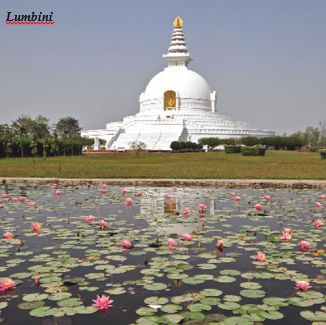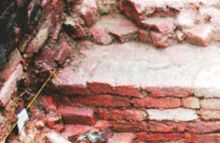 HIMALAYAN NEWS SERVICE Lumbini Development
HIMALAYAN NEWS SERVICE Lumbini Development
History-defying discoveries Excavations have revealed a pre-Ashokan temple of brick‚ which itself was built over a wooden structure o Older remains of a village dating back to as early as 1300 BC were found a few hundred metres south of Lord Buddha’s birthplace KATHMANDU: New excavations on the premises of Maya Devi Temple in Lumbini have unearthed ruins of a thriving village with a shrine, dating back more than 1,000 years before Emperor Ashoka built monuments there to spread Buddhism, extending the history of the site to a much earlier date than previously thought.
Until now, the earliest Buddhist temples have been attributed to Emperor Ashoka, who built a pillar and a brick temple in Lumbini in third century BC in his endeavour to spread Buddhism across the region. “For the first time in South Asia, excavations have revealed a pre-Ashokan temple of brick, which itself was built over a wooden structure,” revealed Prof Robin Coningham of Durham University in UK, who co-directed a team of Nepali and international experts together with Kosh Prasad Acharya, at a press conference in Kathmandu today.
 Coningham also said that even older remains of a village dating back to as early as 1300 BC were found a few hundred metres south of Lord Buddha’s birthplace, pushing the date of the settlement of the region back by a thousand years.
Coningham also said that even older remains of a village dating back to as early as 1300 BC were found a few hundred metres south of Lord Buddha’s birthplace, pushing the date of the settlement of the region back by a thousand years.
“We have now very robust proof that Lumbini’s history extends far before the visit of Emperor Ashoka. The government of Nepal will step up its efforts to preserve the outstanding universal value of the site,” says Sushil Ghimire, Secretary of the Ministry of Culture, Tourism and Civil Aviation. “These two discoveries are giant steps, which help us to better understand the origins of Lord Buddha’s life and the spiritual importance of Lumbini,” says Acharya Karma Sango Sherpa, the vice-chair the World Heritage site since 1997. “I am pleased that the project that the UNESCO has implemented in close cooperation with the Lumbini Development Trust and the Department of Archaeology has resulted in such important discoveries,” says Axel Plathe, Head of the UNESCO Office in Kathmandu and UNESCO Representative to Nepal. “Japan is honoured to have been able to contribute to the success of this flagship project,” says Kunio Takahashi, the Ambassador of Japan to Nepal. ■





